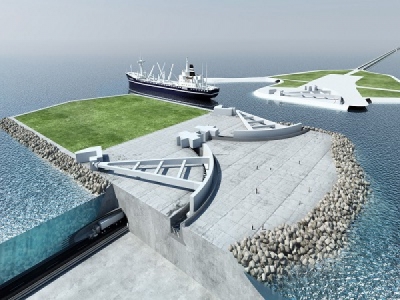
Posted on June 19, 2017
By Jonathan Goldstick, ch2m
According to the latest forecasts, the 2017 Atlantic hurricane season will be more active than historical averages with regard to the number of named storms. To that end, planning for future weather events was top of mind at a May 18 conference on the urgent need for a New York harbor storm surge barrier. Presented by The National Institute for Coastal and Harbor Infrastructure and NY-NJ Metropolitan Storm Surge Working Group, co-sponsors included the Port Authority of New York & New Jersey; The Regional Plan Association (RPA); New Jersey Future; The Waterfront Alliance: Cameron Engineering & Associates; Chelsea Piers, Waterside Plaza, Borough President Gale Brewer; The Alliance for Downtown New York; The Downtown-Lower Manhattan Association; Columbia Law School Sabin Center; Stony Brook SUNY; and the Society of American Military Engineers.
After Superstorm Sandy surged through the Northeast United States destroying many homes and neighborhoods, and forcing communities in New York, New Jersey and Connecticut to rebuild, experts from around the world have been focused on developing strategies to mitigate the effects of future storms.
CH2M had been considering storm mitigation measures since well before Sandy struck. Halcrow (acquired by CH2M in 2011) was one of four firms asked by the American Society of Civil Engineers (ASCE) in 2009 to conceptualize a storm surge barrier plan that could protect New York City from the elevated water levels associated with a massive storm. Our storm surge barrier experts presented a concept for a 5-mile long Outer Harbor Gateway, a barrier across the entrance to the New York/New Jersey harbor.
Fast forward to post-Superstorm Sandy, an increased level of interest in storm surge barriers led to the ASCE hosting a technical seminar on the “Impact of Sandy’s Storm Surge on New York and New Jersey Infrastructure”. We returned to present our paper on the Outer Harbor Gateway Barrier concept, this time summarizing many of the questions that have arisen related to the possibility of storm surge barriers protecting the areas of New York and New Jersey that flooded as a result of Superstorm Sandy.
Estimated in 2009 at $5.9 billion, the Outer Harbor Gateway Barrier crosses the harbor entrance from Sandy Hook in New Jersey to the Rockaway Peninsula in New York at 30 feet above water level. The barrier has two pairs of large radius sector gates that would each block a 600-foot clear channel, a 300-foot lifting gate, a smaller navigation opening for local vessels and 50 sluice gates (each 80 feet wide). This concept could be used alone or in conjunction with a barrier in another part of the harbor.
The Outer Gateway Barrier concept drew heavily upon a 50-mile barrier, designed by Halcrow/CH2M, that is now operating successfully at St. Petersburg in the Russian Federation. That barrier was put to the test in December 2012 and prevented a storm surge flood that, had the barrier not been in place, would have been the fourth highest flood in the recorded history of the city. The residents of St. Petersburg were largely unaware that a flood event had occurred.
While the Outer Harbor Gateway Barrier concept was based on the successful St. Petersburg barrier, there are a number of areas that need to be further evaluated to validate moving forward with design and construction. Critical design considerations include maintenance, environmental impacts, water depth and currents and geotechnical conditions.
With these considerations in mind, it is now up to the local agencies in New York and New Jersey and the federal government to determine how to protect the region from future storms.
Source: ch2m





